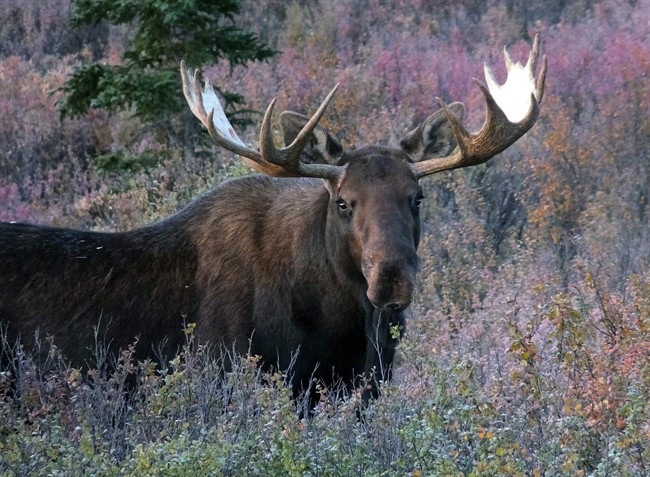HALIFAX – The head of an organization that represents about 4,000 anglers and hunters in Nova Scotia says a Parks Canada plan to kill about 40 moose in a small section of Cape Breton Highlands National Park is badly flawed.

Ian Avery, president of the Nova Scotia Federation of Anglers and Hunters, said Thursday the experimental cull is a bad idea because the science behind it doesn’t add up.
Parks Canada spokesman Derek Quann says the 960-square-kilometre park has too many moose, which are eating so many young trees that the park’s boreal forests are being transformed into grasslands that don’t support certain species.
“We need to take some action to address the restoration of the forest,” said Quann, the park’s resource conservation manager. “If not, we’re in danger of losing biodiversity and we’ll be unable to protect the ecosystem for future generations.”
But before it organizes a full-scale cull, the federal agency wants to measure the impact of a small-scale hunt on the vegetation in a 20-square-kilometre area near North Mountain as part of a four-year study.
Quann had arranged for several Mi’kmaq hunters to start killing the moose this week, but the hunt was temporarily called off Wednesday when about 30 protesters entered a restricted zone and confronted the hunters.

Get daily National news
“There was an exchange of words,” said Quann. “Things were peaceful, though tense and unsettling.”
The Mi’kmaq hunters were brought in because the park signed an agreement in 2012 that guaranteed local bands would have the first opportunity to hunt moose in the park. Quann said the hunt will resume later this fall once the hunters’ safety can be assured.
Avery said the federation was not involved in the protest, but some local guides and hunters say the cull should be stopped because two harsh winters have left the moose population greatly diminished.
The main problem with the plan for a small-scale hunt is that it ignores the fact that once moose are removed from one area, others will simply move in to that territory, Avery said.
“Without a fence, it’s not going to happen,” he said. “Moose move around quite freely in the park.”
Quann said the population in the zone will be kept in check by subsequent hunts over the next two years.
The long-term plan for the park is to reduce the moose population — estimated at 1,800 — by 90 per cent, said Quann.
The population density for moose in the park is 1.9 per square kilometres, which is roughly four times the level found in other areas where moose live.
Aside from the cull near North Mountain, Parks Canada is also planting trees inside a fenced area near the Skyline trail, and it is getting ready to conduct a prescribed burn in a mixed forest near Warren Lake.
The federation agrees there are too many moose in the park, but Avery says staff should scrap the idea of a cull and instead organize a seasonal, managed hunt that would include offering a limited number of licences to hunters across the province.
That’s what happens every year in Gros Morne National Park in western Newfoundland, he said.
“That’s a prime example of how a management plan should work,” he said.
“We know the moose are doing some serious damage up there. We don’t think another two or three years of experiments is the way to go.”
Quaan said it’s difficult to draw a parallel with Gros Morne because the Cape Breton park has experienced a much higher level of moose-related damage.







Comments